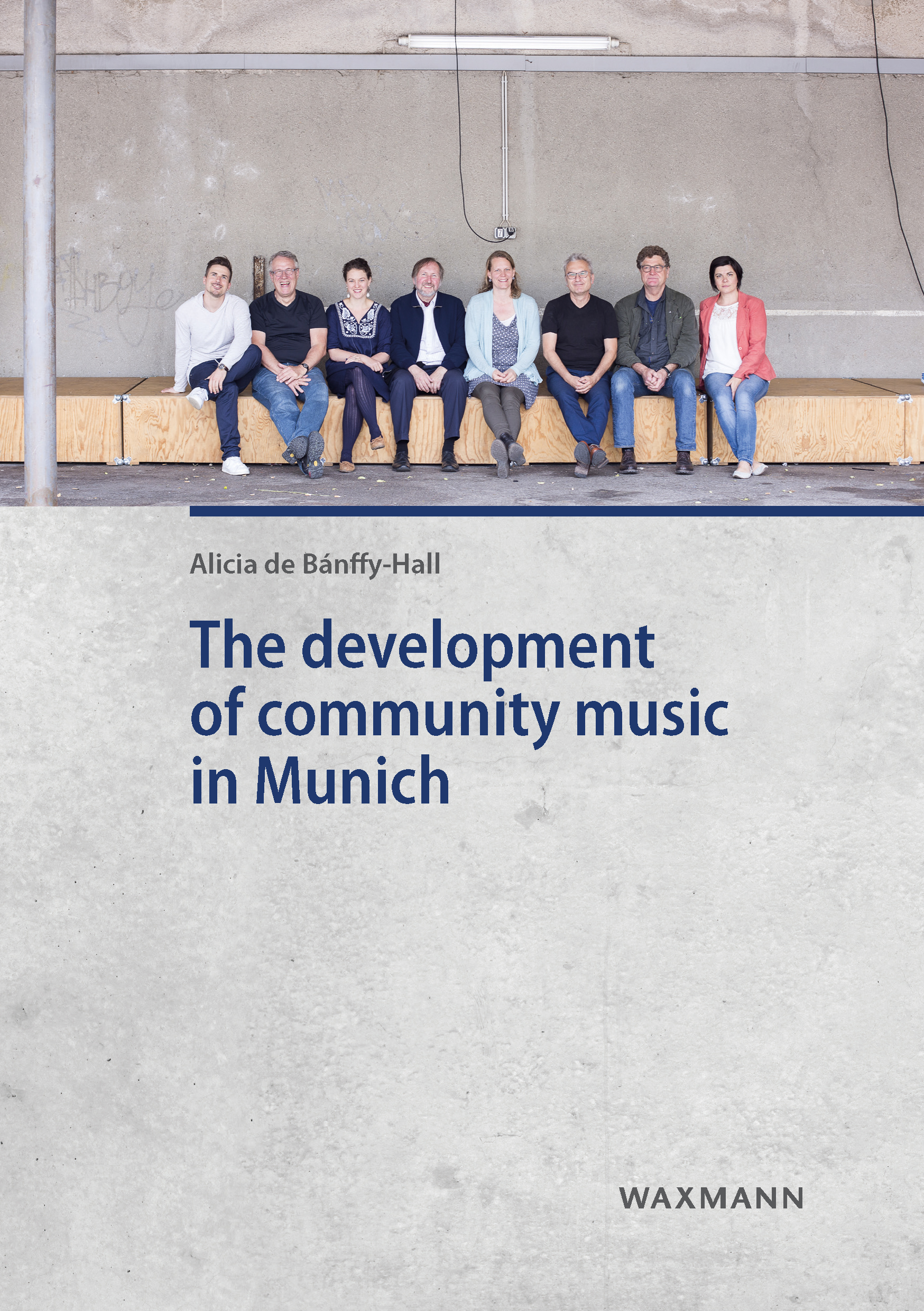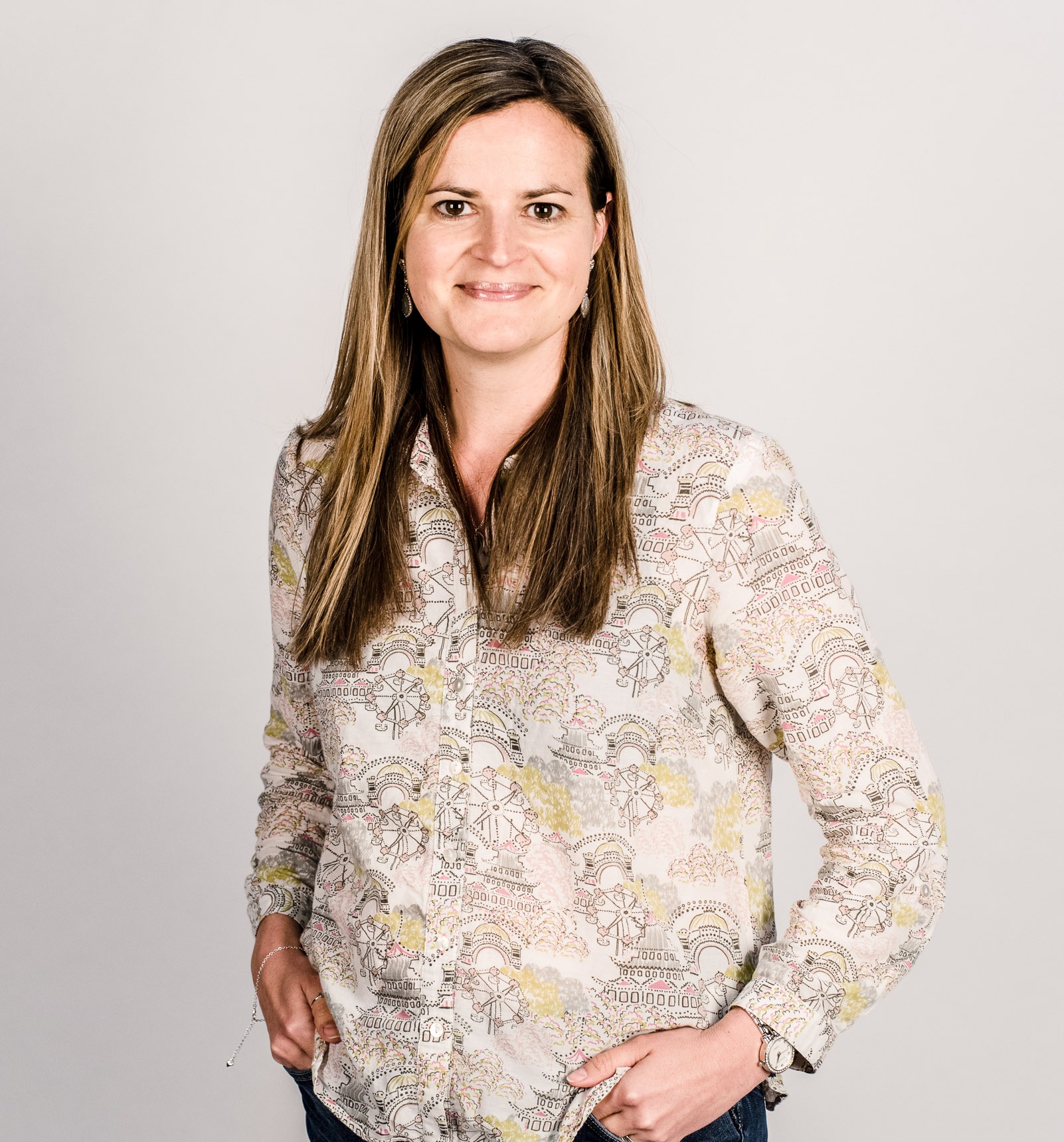The development of community music in Munich, by Alicia de Bánffy-Hall, Münster, Waxmann, 2019, 192 pp., ISBN 978-3-8309-4018-0
Review by Catherine Birch
This 2019 publication by Alicia de Bánffy-Hall, offers a deep insight into the development of community music in Munich, Bavaria. As a German community musician, who has also practiced for a significant period of time in Liverpool, England, de Bánffy-Hall has a unique perspective, situated in the ‘interventionist’ approaches of the UK, but with her roots firmly engrained in German music education approaches and pedagogies. The author’s unique insights, both as a community music practitioner, an academic and a lecturer in community music (having established the first community music Masters programme in Germany in 2016 at the University of Eichstätt-Ingolstadt) shine a light on a specific contextual location that will illuminate understanding of and appreciation for community music in the Munich area of Germany.The publication is an amended version of de Bánffy-Hall’s doctoral dissertation with a German summary of the dissertation (a useful addition for German-speaking students and scholars) in the front matter. One of the author’s intentions is to highlight the importance of participatory music-making as distinct from more traditional modes of music education prevalent in contemporary German culture. The author gives a historical summary of specific aspects of German music education, providing context for how community music has been traditionally situated within the margins. De Bánffy-Hall therefore strives to expose the problematic lack of recognition of both the practice and theory of community music in Germany to date, asserting that, as a field, it could serve to support more formalised structures and the continued pedagogical development of German music education.
In focusing on one specific locale, the author is able to dig deep into the riches of practices diverse in both their demographic and musical activity. Action Research (AR) as cited in the text, serves as the vehicle of exploration and a clearly defined methodology chapter supports this approach to data collection and analysis. This includes, significantly, that ‘AR offers one way to bridge the gap between scholarship and practice’ (p. 83). The specific development of the Munich Community Music Action Research Group (MCMARG) for de Bánffy-Hall’s doctoral investigations, was a significant step forwards in the recognition of the both the need for development of community music in Germany, and to highlight existing practice. The author uses critical pedagogy as both a theoretical and philosophical framework ‘with which to […] underpin the critique and conceptualisations that the MCMARG expressed’ (p. 16) (explored in Chapter 6). As an important lens through which to examine the development of community music in Munich, one of the key issues raised is that of sustainability in relation to action (critical consciousness) and definition (conscientization), with the expression of a ‘need for change’(p.167). As a landmark publication, this work could be exactly the catalyst needed to elicit change, suggesting that community music can be used to reframe the old ‘elitist’ model of German music education and offer a vibrant, inclusive and accessible addition to the traditional pedagogic approaches.
There is a sense of urgency in the text, that this publication is intended not just to inform but as a call for action. The author identifies ‘a locally driven need’ (p. 21) and a call for change and transformation within the complexity of community life in urban areas of contemporary Munich. As a framework for community music in Germany is developed, so the theory and practice, contextually located, can be grown and nurtured. One of the main assertions of the narrative is that ‘community music contributes significantly to the development of music education practice and theory in Germany’ (p. 17), historically the dominant field.
De Bánffy-Hall’s overview of the growth and development of community music, both as a practice, and now as an academic field, is, in her words, ‘examine[d] […] in a particular context (Munich, Germany) at a specific time (between 2013 and 2016) from [her] particular point of view’ (p. 32). The author illuminates not only specific practices but also the arts organisations and funding bodies key to the development of participatory arts projects in Munich, and as such, the gatekeepers and stakeholders of creative work in the community.
This second chapter, ‘Community music’, is a must-read for practitioners and scholars alike. As a comprehensive overview of community music development, the author situates Germany’s community music practice within an international framework. Rooted in the literature and with international perspectives, the author seeks to unpack a gamut of differing views. All the key tenets, significant international developments and foundational principles of community music as a diverse and growing international academic field are presented in this section. The discussions include reference to pedagogical approaches and facilitation methods, theoretical and ideological concepts that have long been part of the international dialogue and ongoing debates around ‘definition and terminology’ (p. 32).
Locating her analysis within the context of participatory music making in Germany, de Bánffy-Hall offers a rich exploration throughout this chapter which will enable a deeper understanding of contemporary community music scholarship worldwide. It is important to note the section where the issue of translation is discussed – that community music does not translate into German on a linguistic level, is significant as ‘many people in Germany struggle to understand what it is and where to place it’ (p. 39). As the chapter continues, the text moves to ‘locating community music in Germany today’ (p. 53) with an expansive unpacking of fields of practice that encompass musical learning in resonance with community music.
The methodology and data collection, as set out in chapter 4, are rigorous and present a model indicating high scholarly standards. The immersive experience of Action Research gives a depth and breadth to the explorations that are unpacked with the author’s ‘personal narrative interwoven’ (p. 92) into the text. Key themes explored in interview with local practitioners included ‘self-definition’, ‘[location of] practice’ and ‘visions’ (p. 94). Findings revealed that ‘practitioners […] worked in isolation’, ‘the concept of community music resonated with them’ and the majority would welcome more opportunity connection with others involved in similar practices (p. 96).
When reading from the perspective of working in community music in the UK, these findings are impactful. When you consider the significant networking opportunities available to those in the field through longstanding organisations such as Sound Sense, and the continued development of new collaborations, for example, The Soundcastle Community, it highlights the well-established community of practitioners already in existence in the UK. It also explicitly highlights the importance of the development of the MCMARG, with its multi-disciplinary membership; a community of researchers, practitioners and policy makers, dedicated to the development of community music in Munich. A description of meetings and subsequent activities demonstrates not only the rich engagement and constructive collaboration of the MCMARG, but the significant contribution to the field: a 2015 conference followed by 2016 IJCM special issue; the first German language community music publication; ‘a selection of key texts from English speaking authors [that] were translated into the German language for the first time’ (p. 122); and the development of initiatives such as ‘the new community music strand of the Munich Philharmonic Orchestra’s education work’ (p. 172).
Detailed and meticulous, and written in a style that is clear and easy to engage with, this publication will enrich the field for both emerging and seasoned scholars, and within the intersecting fields of music education and community music. This also comes with an acknowledgement that community music as an academic field is widely underrepresented in German scholarly literature. De Bánffy-Hall invokes a response from others with the field of community music in Germany, to continue to develop the scholarship in collaboration with the practice, in order to invite growth in an area identified by the author as ‘still in its infancy’ (p. 23), thereby deepening the international dialogue. Significantly a monograph, this publication gives greater value to the diverse perspectives of community music, with the detailed focus of a specific contextual location. The author’s narrative and explorations, carried out with thoroughness and rigour, give a perspective which will serve to enrich the field and encourage others to follow suit, to working collectively towards the ‘hope for a better future’ (p. 176).
About the reviewer Catherine Birch is a Senior Lecturer in Community Music at York St. John University, UK. She facilitates weekly singing and song-writing sessions for the York St. John Prison Partnership Project.
As a community musician, Catherine works primarily as a vocal leader, working with all ages across the education sector as well as in community settings.
Catherine is currently a PhD researcher through the International Centre for Community Music (ICCM), supervised by Professor Lee Higgins. The central research theme explores how working in a trauma-informed way, and particularly using the voice, can be impactful as a tool in trauma recovery.













